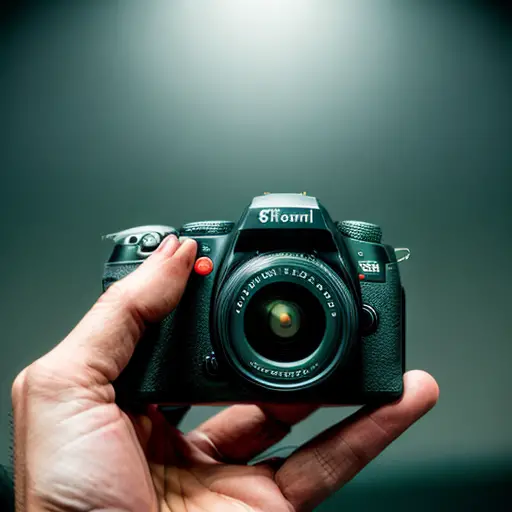The Birth of Digital Imaging: Tracing the Origins of the Digital Camera
Picture this: it was a time when selfies were still a distant dream, and the world was captivated by the wonders of film photography. But then, like a flash of lightning, the digital camera burst onto the scene, forever changing the way we capture memories. It was the late 20th century, a time when people were still rocking their Walkmans and dial-up internet was considered cutting-edge technology. Suddenly, the digital camera emerged, like a rebellious teenager crashing a family reunion. No more winding film, no more waiting for prints to develop – this new invention promised instant gratification. It was a revolution in the making, and little did we know, it was about to turn us all into amateur photographers, capturing everything from our breakfast to our cat's most unflattering poses. The digital camera had arrived, and the world would never be the same again.
The Evolution of Digital Photography: Pioneering Technologies and Early Innovations
The first digital camera was invented in 1975 by Steven Sasson, an engineer at Eastman Kodak. However, this early prototype was quite large and weighed around 8 pounds (3.6 kg). It took 23 seconds to capture a black and white image with a resolution of 0.01 megapixels, and the image was stored on a cassette tape! It wasn't until the 1990s that digital cameras became more compact and accessible to the general public.
Imagine a time when the world was still in awe of the wonders of dial-up internet and the Nokia brick phone. It was the late 20th century, and amidst this technological landscape, a groundbreaking invention emerged: the digital camera. With its humble beginnings, this early version of the digital camera was a clunky contraption, resembling a mix between a calculator and a Game Boy. But hey, it was a start! As the years went by, the pioneers of digital photography tirelessly worked to refine this revolutionary device. They battled with pixelated images, limited storage capacity, and batteries that seemed to drain faster than a kid's enthusiasm for broccoli. Yet, they persevered, pushing the boundaries of technology and paving the way for the sleek, high-resolution digital cameras we know today. It's incredible to think that what once seemed like a futuristic fantasy is now a ubiquitous tool in our everyday lives. So, let's raise our memory cards and toast to the evolution of digital photography, for it has truly transformed the way we capture and cherish our precious moments.
The Game-Changer: Unveiling the First Commercial Digital Camera

In the early 1970s, when disco was all the rage and bell-bottoms were the height of fashion, a team of engineers and visionaries were quietly working on a project that would change the world of photography forever. It was during this era that the first commercial digital camera was unveiled, marking a monumental shift in the way we capture and preserve memories. This game-changer, known as the 'DS-1P,' was introduced by a company called Kodak in 1975. With its bulky design and limited capabilities, it may seem primitive by today's standards, but back then, it was a marvel of technology.
The DS-1P boasted a resolution of a whopping 0.01 megapixels, which may sound laughable now, but at the time, it was a breakthrough. No longer bound by the constraints of film, photographers could now instantly preview their shots on a tiny, black-and-white display. It was a revelation, a glimpse into the future of photography. However, this groundbreaking device came with a hefty price tag, making it accessible only to a select few early adopters.
Despite its limitations, the DS-1P laid the foundation for the digital cameras we use today. It sparked a wave of innovation and competition among manufacturers, leading to rapid advancements in image quality, storage capacity, and user-friendly interfaces. As the years went by, digital cameras became smaller, more affordable, and capable of capturing stunningly detailed photographs. The once-novelty item became a ubiquitous tool, empowering everyone to become a photographer, documenting their lives one click at a time.
Looking back, it's incredible to see how far we've come since the introduction of that clunky, black-and-white DS-1P. From the early days of digital photography to the present, the evolution of the digital camera has been nothing short of extraordinary. So, let's raise our lenses and salute the game-changer that started it all, for it paved the way for a new era of visual storytelling and forever transformed the way we capture the world around us.
Impact and Legacy: How the Digital Camera Revolutionized Photography
The first digital camera was invented in 1975 by Steven Sasson, an engineer at Eastman Kodak. However, this early version was quite bulky, weighing about 8 pounds (3.6 kg), and had a resolution of only 0.01 megapixels. It took 23 seconds to capture a black and white image, which was then stored on a cassette tape!
When the digital camera burst onto the scene in the late 20th century, it unleashed a wave of innovation that forever changed the world of photography. Gone were the days of film rolls and waiting for prints to develop. With the advent of digital photography, anyone could instantly capture, view, and share their images with just a click of a button. This accessibility democratized photography, turning it into a universal language that transcended borders and cultures. The digital camera revolutionized not only the way we document our lives but also how we perceive the world around us. It empowered individuals to experiment, learn, and grow as photographers, pushing the boundaries of creativity. Today, as we snap selfies, capture breathtaking landscapes, and immortalize everyday moments, we owe a debt of gratitude to the digital camera for its enduring impact and lasting legacy.

